Search results for "leena krohn"
Nationalism in war and peace
3 May 2012 | Reviews
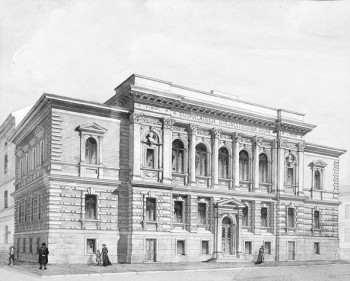
House of words: the Finnish Literature Society building in Helsinki. Architect Sebastian Gripenberg, 1890. Watercolour by an unknown Russian artist, 1890s
Kai Häggman
Sanojen talossa. Suomalaisen Kirjallisuuden Seura 1890-luvulta talvisotaan
[In the house of words. The Finnish Literature Society from the 1890s to the Winter War]
Helsinki: Suomalaisen Kirjallisuuden Seura, 2012. 582 p., ill.
ISBN 978-952-222-328-9
€54, hardback
The Finnish Literature Society has, throughout its history, played a multiplicity of roles: fiction publisher, research institute specialising in folklore studies, organiser of mass campaigns in support of national projects, literary gatekeeper, learned society, controller of language development.
The priorities of these areas of interest have changed from decade to decade, so Kai Häggman has taken on an exceptionally difficult subject to describe. He has, however, succeeded brilliantly in gathering the different threads together, using as as lowest common denominator the ideas of nationalism and nation whose role in global modernisation and European history have been studied, among others, by the British historians Ernest Gellner and Eric Hobsbawm. More…
Once upon a time…
13 January 2012 | Articles, Non-fiction
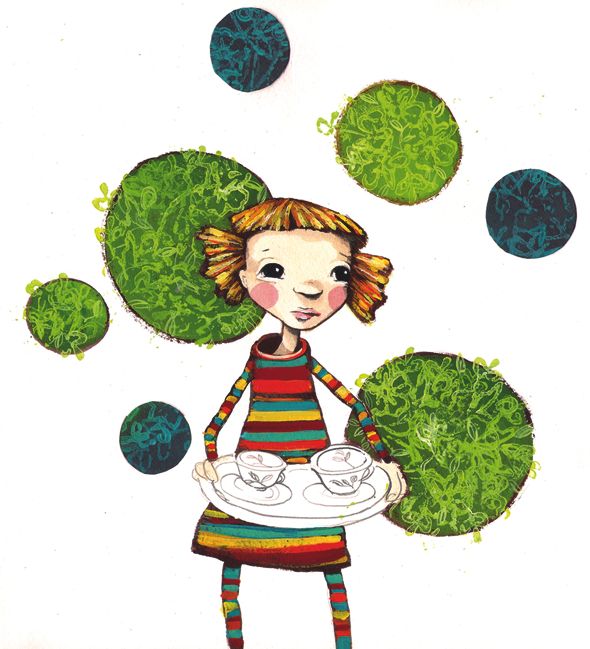
Sari Airola's illustration in Silva och teservisen som fick fötter (‘Silva and the tea set that took to its feet’, Schildts) by Sanna Tahvanainen
The future of book publishing is not easy to predict. Books for children and young people are still produced in large quantities, and there’s no shortage of quality, either. But will the books find their readers? Päivi Heikkilä-Halttunen takes a look at the trends of 2011, while in the review section we’ve picked out a selection of last year’s best titles
The supply of titles for children and young adults is greater than ever, but the attention the Finnish print media pays to them continues to diminish. Writing about this genre appears increasingly ghettoised, featuring only in specialist publications or internet chat rooms and blogs.
Yet, defying the prospect of a recession, Suomen lastenkirjakauppa, a bookshop specialising in children’s literature, was re-established in central Helsinki in autumn 2011, following a ten-year break. Pro lastenkirjallisuus – Pro barnlitteraturen ry, the Finnish society for the promotion of children’s literature, has been making efforts to found a Helsinki centre dedicated to writing and illustration for children. The society made progress in this ambition when it organised a pilot event in May 2011. More…
Government prize for translation 2012
14 September 2012 | In the news
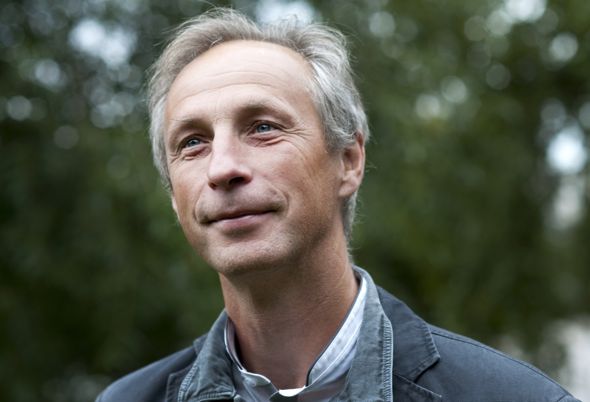
Vladimír Piskoř. Photo: Charlotta Boucht
The Finnish Government Prize for the Translation of Finnish Literature of 2012 – worth €15,000 – was awarded to the Czech translator Vladimír Piskoř.
Piskoř (born 1960), graduated from the Charles University of Prague in 1984, majoring in Finnish. Since the early 1990s he has translated almost 30 titles, most by contemporary authors, including Kristina Carlson, Kari Hotakainen, Leena Krohn, Rosa Liksom, Asko Sahlberg, Juha Seppälä, Petri Tamminen and Maria Peura.
‘I personally am fond of the novels by Kari Hotakainen: I sometimes play with the idea of becoming a writer myself, and I find his style and themes particularly interesting. Kristina Carlson’s latest novel Herra Darwinin puutarhuri (‘Mr Darwin’s gardener’, 2010) is a truly inspiring work both as a reader and a translator,’ he says.
Piskoř is currently working on Kari Hotakainen’s novel Jumalan sana (‘The word of God’) and Leena Lander’s historical novel Käsky (‘Command’). In 2006 he was awarded the Czech translators’ special prize for the novel Höyhen (‘Feather’) by Asko Sahlberg.
Vladimír Piskoř received his award in Helsinki on 10 September from State Secretary Jarmo Lindén; he thanked Piskoř for the work he has done for the last twenty years, particularly in the field of contemporary Finnish fiction.
The prize has been awarded – now for the 38th time – by the Ministry of Education and Culture since 1975 on the basis of a recommendation by FILI – Finnish Literature Exchange.
Leena Lander: Liekin lapset [Children of the flames]
23 June 2010 | Mini reviews, Reviews
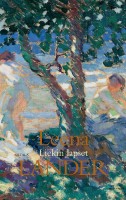 Liekin lapset
Liekin lapset
[Children of the flames]
Helsinki: Siltala, 2010. 419 p.
ISBN 978-952-231-022-1
€ 27.30, hardback
Novels by Leena Lander (born 1959) have been translated into more than 20 languages. Liekin lapset is a family saga, told in two parallel timelines. One is a portrait of a small coastal community in south-western Finland from the turn of the 20th century up to the end of the Finnish civil war in 1918 and the years following it. Life in the area is governed by a sawmill and a manor, socially dividing the community in two. Saida, Joel, Anders and Arvi grow up together, the future workers dreaming of socialism and the sons of the manor playing warlords. In the contemporary strand of the story, Sakari Salin, Saida’s grandson, begins researching his grandmother’s life. The documents reveal some rather remarkable events: here, the author defends the rights of those who were on the losing side in the civil war and creates a lively – as well as historically grounded – portrait of the times. The dialogues and characters in this novel work well, and the structure supports a complex system of psychosocial interconnections, in which the present finds an explanation in the past.
Marja-Leena Mikkola: Helmenkantaja [The pearl bearer]
19 February 2015 | Mini reviews, Reviews
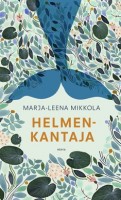 Helmenkantaja
Helmenkantaja
[The pearl bearer]
Helsinki: Otava, 2014.125 pp.
ISBN 978-951-1-28182-5
€23.90, hardback
Marja-Leena Mikkola (born 193x) has had a long career as a poet and translator. She has also written books for children and young adults, and Helmenkantaja shows her thorough familiarity with Anglo-Saxon fantasy fiction. Charles Kingsley’s Water Babies as well as H.C. Andersen’s little mermaid seem to glimmer in the background of this story. True to Mikkola’s ethos, the novel has a dose of ecocriticism in its theme of protection of a threatened pearl oyster. Reetta is fed up with looking out for her younger siblings at the family’s summer cabin; it feels as if the summer is slipping away. This everyday tale gradually breaks off into an exciting adventure in an underwater kingdom. The water boy, heir to the queen of the water, has to be rescued from the clutches of the water wizard. This difficult task requires a daredevil like Reetta, who, in additon to many other important qualities, has the gift of storytelling.
Translated by Lola Rogers
Anna-Leena Siikala: Itämerensuomalaisten mytologia [Baltic Finnic mythology]
12 April 2013 | Mini reviews, Reviews
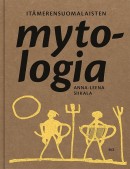 Itämerensuomalaisten mytologia
Itämerensuomalaisten mytologia
[Baltic Finnic mythology]
Helsinki: Finnish Literature Society, 2013. 536 p., ill.
ISBN 978-952-222-393-7
€ 45, hardback
Academician and Professor Emeritus of Folklore Anna-Leena Siikala presents a overview of her research. The book also makes use of the latest research in other fields in order to chart Baltic Finnic folk poetry, shamanism and folk beliefs. The Kalevala, Elias Lönnrot’s epic poem based on Finnish folklore, forms only a part of the poetry written in Kalevala metre. Although the poem is often perceived to be Finno-Karelian in origin, around half of its material is also known in Estonia: many of the poems and myths have links to Uralic and Germanic tradition. By means of numerous examples Siikala illustrates the different styles of folk poetry, its manifestations of vernacular religion and its rich mythology. In Finland the poems became modified over the centuries, influenced by the Christian faith, among other things. In different areas the figure of the divine hero Väinämöinen has acquired different emphases: it is less a question of mythology than of mythologies. The book’s illustrations are rich and informative, and the work is a unique treasure trove in its field.
Translated by David McDuff
Marja-Leena Tiainen: Kahden maailman tyttö [The girl from two worlds]
18 January 2012 | Mini reviews, Reviews
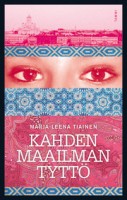 Kahden maailman tyttö
Kahden maailman tyttö
[The girl from two worlds]
Helsinki: Tammi, 2011. 261 p.
ISBN 978-951-31-5937-5
€ 26.65, hardback
Marja-Leena Tiainen (born 1951) has dealt with unemployment, immigration, and racism in her works, in ways that are accessible to her young readership. She researches her topics with care. The idea for this book dates back to 2004, when the author made the acquaintance of a Muslim girl who lived in a reception centre in eastern Finland; her experiences fed into Tara’s story. Tiainen’s central theme, ‘honour’ violence in the Muslim community, is surprisingly similar to Jari Tervo’s Layla (WSOY, 2011). Tiainen’s is a traditional story about a girl growing up and surviving, but the novel’s strong points are the authentic description of everyday multiculturalism, and the intensity of the narration. The reader identifies with Tara’s balancing act, which she must carry out in the crossfire of her father’s authority, family tradition, and her own dreams. In spite of everything, the community also becomes a source of security and support for Tara. The narrative arc is coherent and, despite the numerous overlapping time-frames, the tension is sustained right up to the final, conciliatory solution.
Translated by Fleur Jeremiah and Emily Jeremiah
Leena Liukkonen: Aatos
12 March 2015 | Mini reviews, Reviews
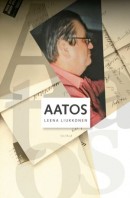 Aatos
Aatos
Helsinki: Siltala, 2014. 155 pp.
ISBN 978-952-234-225-6
€28.50, hardback
Aatos Erkko (1932–2012) was a prominent newspaper publisher and principal owner of the Sanoma group; the company’s largest and most prestigious paper is Helsingin Sanomat. Reticent by nature and possessed of a difficult personality, Erkko nonetheless tried to act in accordance with his ideals. Rarely seen in the public eye, during his lifetime he was considered one of Finland’s most influential forces behind the scenes. Even though he was not keen on taking over the reins of the paper from his father Eljas (son of the original founder) whose wish it was, Aatos Erkko took the role seriously, developing Helsingin Sanomat into the Nordic region’s largest newspaper. Journalist and writer Leena Liukkonen’s small-scale, warm-hearted portrait is based mostly on Erkko’s later years, making use of discussions and correspondence, as well as interviews recorded by a Swedish colleague. Known as Finland’s richest man, Erkko talks frankly about his difficult relationship with his parents, and the disappointments of his life. The book leaves the impression of a friendship portrayed in terms that are open and honest.
Translated by David McDuff
Forest and fell
8 May 2013 | Reviews
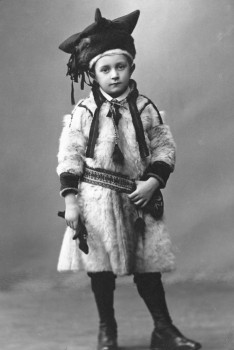
From North to South: young Heikki Soriola on his way to represent Utsjoki in Helsinki, in 1912. Photo from Saamelaiset suomalaiset
Veli-Pekka Lehtola
Saamelaiset suomalaiset: Kohtaamisia 1896–1953
[Sámi, Finns: encounters 1896–1953]
Helsinki: Suomalaisen Kirjallisuuden Seura, 2012. 528 p., ill.
ISBN 978-952-222-331-9
€53, hardback
Leena Valkeapää
Luonnossa: Vuoropuhelua Nils-Aslak Valkeapään tuotannon kanssa
[In nature, a dialogue with the works of Nils-Aslak Valkeapää]
Helsinki: Maahenki, 2011. 288 p., ill.
ISBN 978-952-5870-54-1
€40, hardback
The study of the Sámi people, like that of other indigenous peoples, has become considerably more diverse and deeper over recent decades. Where non-Sámi scholars, officials and clergymen once examined the Sámi according to the needs and values of the holders of power, contemporary scholarship starts out from dialogue, from an attempt to understand the interactions between different groups. More…
Leena Parkkinen: Galtbystä länteen [West from Galtby]
19 December 2013 | Mini reviews, Reviews
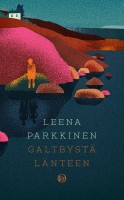 Galtbystä länteen
Galtbystä länteen
[West from Galtby]
Helsinki: Teos, 2013. 339 p.
ISBN 978-951-851-510-7
€32.90, hardback
Leena Parkkinen’s first novel, Sinun jälkeesi, Max (‘After you, Max’) was awarded the Helsingin Sanomat literature prize for best first work of 2009. Her new novel contains crime story ingredients, but the focus is on love between siblings, loss and the demand for truth. The story begins in 1947, after the war, on an island in the south-western Finnish archipelago. Sebastian, brother of Karen, has returned from the front; it’s time to mend the best clothes and dancing shoes. But to the horror of the island community, the body of a young girl is found on the shore, and Sebastian gets the blame. Sixty-five years later her brother’s fate has not left Karen alone, and she sets out to find the truth. Capable of handling different times, Parkkinen (born 1979) is also a skilful interpreter of conflicting sentiments, as unexpected twists develop towards the end.
Invisible cities
31 December 1992 | Archives online, Essays
Extracts from Leena Krohn’s collection of essays, Rapina ja muita papereita (‘Rustle, and other papers’, WSOY, 1989).
Past me hurries a man in a rustling anorak. He pushes a card into a crack in the wall. There is a whirring noise, a door opens and, shoulder first, he pushes his way into a cramped room. At eye-level is a black screen, and under it a group of buttons. On the buttons is printed: Cash. Statement. Balance. On an empty button someone has written: Holdup. A question appears on the screen, and deserves our undivided attention: Do you wish to continue with another transaction?
We do! We certainly do. The mild warmth that suffuses the automatic bank pleases me, too. Why shouldn’t it? The warmth of the machine, the heat of money, is itself one of the forms of human energy secreted by the city, however stunted and primitive it may seem as it oozes from the depths of the metal cabinet. More…
Potentially translatable
27 March 2014 | In the news
The daily paper Aamulehti, published in Tampere, and the bookshop Tulenkantajat (‘The torch-bearers’), in the same city, founded in 2013 a prize called Tulenkantajat* for a Finnish-language writer whose book, published in the previous year, is estimated to have the ‘best export potential’. The first jury selects four to six candidates, the second chooses the winner. The prize is worth €5,000.
The winner of the 2014 prize was announced on 24 March: it is the graphic novel Vain pahaa unta (‘Just a bad dream’, WSOY) by the father-daughter team Ville Tietäväinen and Aino Tietäväinen; see our feature; we have also reviewed three other finalists on the list of six.
The remaining finalists were the crime novel Niiden kirjojen mukaan teidät on tuomittava (‘You will be judged according to your books’, Atena) by Kai Ekholm, Piippuhylly (‘The pipe shelf’, WSOY), short stories by Katja Kettu, the novel Hotel Sapiens (Teos) by Leena Krohn, the novel Herodes (‘Herod’, WSOY) by Asko Sahlberg and Kirahviäiti ja muita hölmöjä aikuisia (‘The giraffe mummy and other silly adults’, Teos), a picture book for children by Alexandra Salmela and Martina Matlovičová.
Who can say whether the books on this shortlist will be ‘exported’, i.e. translated prolifically? Time will tell.
*) The mid 1920s saw the foundation of a group of writers called the Torch-Bearers; it first published intensely personal nature poetry but later began to import European influences into Finnish literature. The Torch-Bearers aimed for the experience of citizenship of the world as unity between people without denying one’s own fatherland or nationality. (See Vesa Mauriala’s article here.)
When the viewer vanishes
26 May 2015 | Essays, Non-fiction
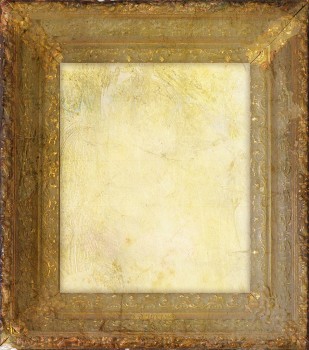 For the author Leena Krohn, there is no philosophy of art without moral philosophy
For the author Leena Krohn, there is no philosophy of art without moral philosophy
I lightheartedly promised to explain the foundations of my aesthetics without thinking at any great length about what is my very own that could be called aesthetics. Now I am forced to think about it. The foundations of my possible aesthetics – like those of all aesthetics – lie of course somewhere quite different from aesthetics itself. They lie in human consciousnesses and language, with all the associated indefiniteness.
It is my belief that we do not live in reality, but in metareality. The first virtual world, the simulated Pretend-land is inherent in us.
It is the human consciousness, spun by our own brains, which is shared by everyone belonging to this species. Thus it can be called a shared dream, as indeed I have done. More…
To live, to live, to live!
31 December 2001 | Archives online, Fiction, poetry
From Kaukainen puutarha (‘A distant garden’, WSOY, 1924). Introductions by Vesa Mauriala and Leena Krohn
Flowering earthThe earth’s spilling out purple lilac clusters, To live, to live, to live! So what if death’s coming! |
Kukkiva maaMaa kuohuu syreenien sinipunaisia terttuja. Elää, elää, elää! Mitä siitä, että kuolema tulee! |
